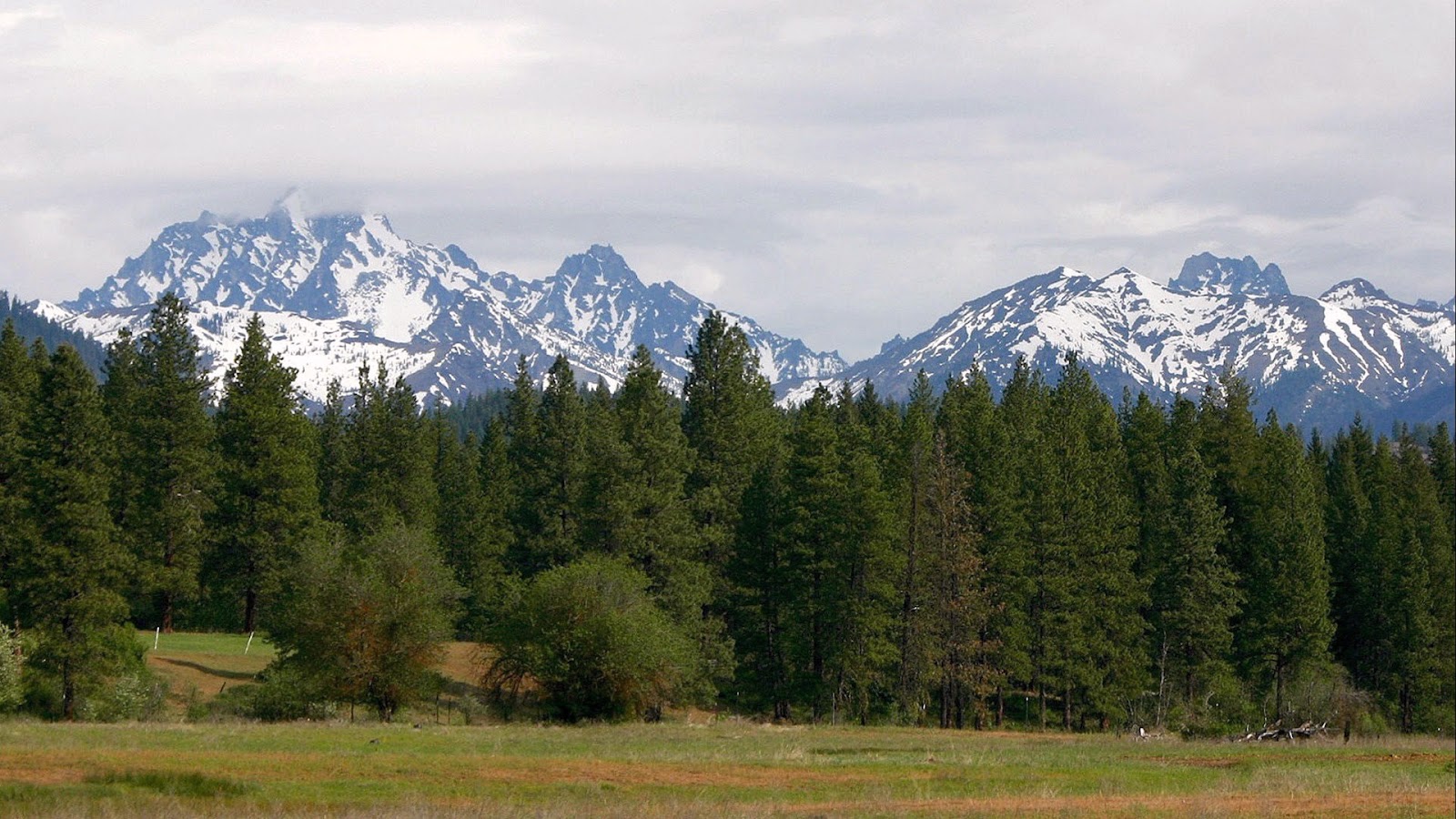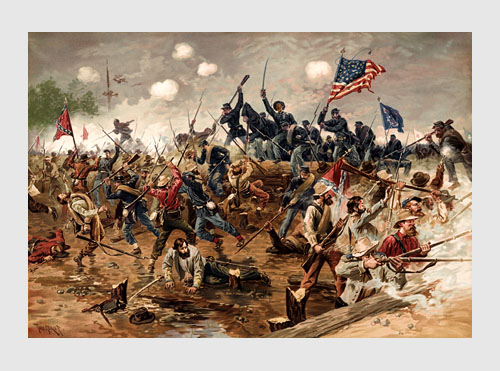
Want some notes to help break down your AP US History class? Or are you looking to brush up on a historical period you're having a hard time remembering?
We have detailed notes organized by US History units, which work with the most recent AP US History guidelines. Read on to get help with AP US History and learn how to prepare for the test.
What Are the Current AP US History Guidelines?
AP US History has three broad learning objectives:
- Historical thinking skills (basically how you analyze what you learn)
- Reasoning processes (historical thinking skills)
- Thematic learning objectives (themes to look for in each period covered in AP US History)
APUSH is divided up into nine units, which each correspond to a specific time period.
We'll quickly go over the historical thinking skills you’ll be using in each unit of the course below so you know what to look for as you dig into the AP US History notes, which are arranged chronologically by unit/time period.

The 6 Historical Thinking Skills for AP US History
The AP program wants to help US History students develop historical thinking skills, rather than just having them memorize a string of facts about a certain place or time period.
Especially since AP US History is notorious for requiring students to memorize tons of dates, facts, and names, the current curriculum aims to develop history skills so that the course isn't mostly memorization-based.
Each APUSH exam question will test one or more of these skill-based objectives as well as one or more of the thematic objectives. So keep these skills in mind as you go through the chronological notes.
Your AP US History teacher should be working on these skills with your class. If they're not, we recommend getting a prep book, which will review the skills in detail and show you how to demonstrate them in the essays.
Now then, let's look at each of these skills in detail.
Skill 1: Developments and Processes
Students should be able to identify important historical concepts, developments with significant historical impacts, and historical processes. An example of this from units one and two would be learning about Native American societies (and how they functioned) prior to European contact, the process of European colonization, and the historical impact of that colonization on Native American societies.
Skill 2: Sourcing and Situation
This skill is all about understanding historical sources. Students should be able to distinguish between primary and secondary sources and also be able to identify where a source came from, the source's perspective, its intended audience, and its purpose.
Additionally, students should learn how to vet the reliability of a source and understand how the source's perspective affects how it can be used in historical interpretation.
Skill 3: Claims and Evidence in Sources
Students should learn how to analyze arguments in primary and secondary sources. This includes identifying a source's claim, picking out its substantiating evidence, and evaluating the quality and persuasiveness of the argument.
Students should also be able to explain this process, especially when comparing two different sources.
Skill 4: Contextualization
With this skill, students learn to describe and analyze the context of various historical events, developments, and processes. More importantly, students should understand how to situate a particular historical event within its broader historical context. For example, unit five covers the general time period during which the Civil War took place. But the Civil War didn’t just happen out of nowhere. Instead, a bunch of social and political factors, including the Compromise of 1850, its failure, and the election of 1860 created a context that made the Civil War happen.
Skill 5: Making Connections
Using historical reasoning processes (which we'll get to in a moment), students should know how to analyze patterns and create connections between historical developments and processes. Students should also be able to explain these connections and their implications.
Skill 6: Argumentation
This skill is all about developing and defending an argument. Students should know how to make a historically defensible claim, use historical reasoning to make a point, and back up that point with evidence. Students will also learn how to corroborate, qualify, or modify an existing argument.

The 3 Reasoning Processes for AP US History
These reasoning processes are designed to help reinforce the current skills-based approach to US History. These three reasoning processes are tools students will learn to use in order to develop a historical thinking mindset that allows them to intellectually engage with historical subject matter.
Reasoning Process 1: Comparison
Students should develop the ability to make logical and accurate comparisons between different historical developments, periods, and processes. This involves picking out similarities and differences, explaining them, and connecting them to greater historical significance.
Reasoning Process 2: Causation
With this reasoning process, students should learn how to discern, describe, and explain the causes and/or effects of different historical developments and processes. This includes explaining the relationship between events, understanding the differences between primary and secondary causes, and describing the short- and long-term effects of events.
Additionally, students should be able to explain how relevant context influenced a historical development or process and discuss its significance.
Reasoning Process 3: Continuity and Change
Students should learn how to identify, describe, and explain patterns of continuity and change over time. Also, students should be able to explain the relative historical significance of specific historical developments in relation to larger historical patterns, developments, and/or events.

Have you ever heard the phrase "missing the forest for the trees"? The same goes here—the AP program doesn't want you to memorize a bunch of years and names without understanding the larger relevance of them.
The 8 Thematic Learning Objectives for AP US History
Beyond just the basic facts of US history and broad historical thinking skills, the AP program wants you to get a bigger-picture understanding of major themes and developments across America's history, just as you would in a college course.
The goal is to be able to connect these themes between different periods in US history and be able to discuss them in an essay.
As we get into the concept outline, which breaks down APUSH by time periods/units and where we are linking to notes, think about these themes and see whether you can connect them to the outline notes. These are important themes to trace throughout all of your AP US History studying!
- Theme 1: American and National Identity (NAT): How and why definitions of American and national identity and values have developed, including citizenship, constitutionalism, foreign policy, assimilation, and American exceptionalism
- Theme 2: Work, Exchange, and Technology (WXT): The factors behind the development of systems of economic exchange, particularly the role of technology, economic markets, and government
- Theme 3: Geography and the Environment (GEO): The role of geography and both the natural and human-made environments on social and political developments in what would become the United States
- Theme 4: Migration and Settlement (MIG): Why and how the various people who moved to and within the United States both adapted to and transformed their new social and physical environments
- Theme 5: Politics and Power (PCE): How different social and political groups have influenced society and government in the United States, as well as how political beliefs and institutions have changed over time
- Theme 6: America in the World (WOR): The interactions between nations that affected North American history from the colonial period to our current era, as well as the influence of the United States on world affairs
- Theme 7: American and Regional Culture (ARC): How and why national, regional, and group cultures have developed and changed as well as how culture has shaped government policy and the economy
- Theme 8: Social Structures (SOC): How and why systems of social organization develop and change as well as the impact these systems have on the broader society
AP US History Notes by Unit and Time Period
The AP US History course is organized by units, or chronological periods, as well as the historical skills and themes discussed above. In other words, this is your basic "first A happened, then B, then C" structure that you're probably used to from past history classes, as well as the specific dates, names, and events of history.
After all, a great essay about the development of democracy in America would be weakened if you didn't know the year the Constitution was ratified!

That was in 1788, by the way.
So yes, chronology is the easiest way to think about history. But remember to think about the eight themes and try to connect them to the basic facts you're learning.
For example, when thinking about secession, you should know when the Southern states seceded (in 1860 and 1861), but you could also connect the "American and Regional Culture" theme to explain why: "The belief in a distinctly Southern way of life and a refusal to abandon it drove the Southern states to secede."
In short, understanding the overarching themes will help you gain a broader understanding of the names and dates you're learning. Plus, being able to write about them will take your essays from good to great.
The following chapter outlines come from AP Study Notes. The source is The American Pageant, one of the best AP US History textbooks. The time periods don't always exactly match up with AP's guidelines, which is going to be true for most textbooks (there are only a few out there written exclusively for APUSH). But we have organized the outlines so they mostly match up with the AP US History's units and division of the timeline.
Whether you're using The American Pageant or not, these outlines should provide you with useful overviews, which can help you study over the course of the year or in the run-up to the AP exam in May.
Unit 1: 1491-1607 (4-6% of Exam)
- The Planting of English America: 1500-1733
Unit 2: 1607-1754 (6-8% of Exam)
- Settling the Northern Colonies: 1619-1700
- American Life in the Seventeenth Century: 1607-1692
Unit 3: 1754-1800 (10-17% of Exam)
- Colonial Society on the Eve of Revolution: 1700-1775
- The Road to Revolution: 1763-1775
- Launching the New Ship of State: 1789-1800
Unit 4: 1800-1848 (10-17% of Exam)
- The Second War for Independence and the Upsurge of Nationalism: 1812-1824
- The Rise of a Mass Democracy: 1824-1840
- The Ferment of Reform and Culture: 1790-1860
- The South and the Slavery Controversy: 1793-1860
- Manifest Destiny and Its Legacy: 1841-1848
Unit 5: 1844-1877 (10-17% of Exam)
- Renewing the Sectional Struggle: 1848-1854
- Drifting Toward Disunion: 1854-1861
- Girding for War—The North and the South: 1861-1865
- The Furnace of Civil War: 1861-1865

Unit 6: 1865-1898 (10-17% of Exam)
- Paralysis of Politics in the Gilded Age: 1869-1896
- Industry Comes of Age: 1865-1900
- America Moves to the City: 1865-1900
- The Great West and the Agricultural Revolution: 1865-1896
Unit 7: 1890-1945 (10-17% of Exam)
- The Path of Empire: 1890-1899
- America on the World Stage: 1899-1909
- Progressivism and the Republican Roosevelt: 1901-1912
- Wilsonian Progressivism at Home and Abroad: 1912-1916
- The War to End War: 1917-1918
- American Life in the "Roaring Twenties": 1919-1929
- The Politics of Boom and Bust: 1920-1932
- The Great Depression and the New Deal: 1933-1939
- Franklin D. Roosevelt and the Shadow of War: 1933-1941
- America in World War II: 1941-1945
Unit 8: 1945-1980 (10-17% of Exam)
- The Cold War Begins: 1945-1952
- The Eisenhower Era: 1952-1960
- The Stormy Sixties: 1960-1968
- The Stalemated Seventies: 1968-1980
Unit 9: 1980-Present (4-6% of Exam)
- The Resurgence of Conservatism: 1980-2000
Notice that the textbook's chapters fall roughly within the APUSH guidelines for chronology in terms of the amount of time spent on each period.
All US history textbooks approved by the College Board (your class textbook should be one of those!) will have good coverage of all chronological topics, so if you have chapter guides or notes from your own APUSH class, you can (and definitely should!) use those as well.
Reading through your own notes and the notes we’ve included here can help you out a lot in your preparation for both in-class exams and the final big exam in May. But notes aren’t the only thing you can use to study! There are also tons of videos and practice quizzes out there to help you ace your exam. You can start by checking out our guide to AP US History quizzes so you can test your skills.

What's Next?
Looking for more APUSH resources? Check out this overview of the exam, our expert AP US History review guide, and a list of every AP US History practice exam available.
Want some topic-specific AP US History guides? Brush up on the Proclamation of 1763, the Open Door Policy in China, the Platt Amendment, and the rise of flappers in the 1920s US.
Also studying for the SAT/ACT? Get expert tips on when you should take the SAT/ACT, and learn about the best prep books you can buy for the SAT/ACT.
These recommendations are based solely on our knowledge and experience. If you purchase an item through one of our links, PrepScholar may receive a commission.












